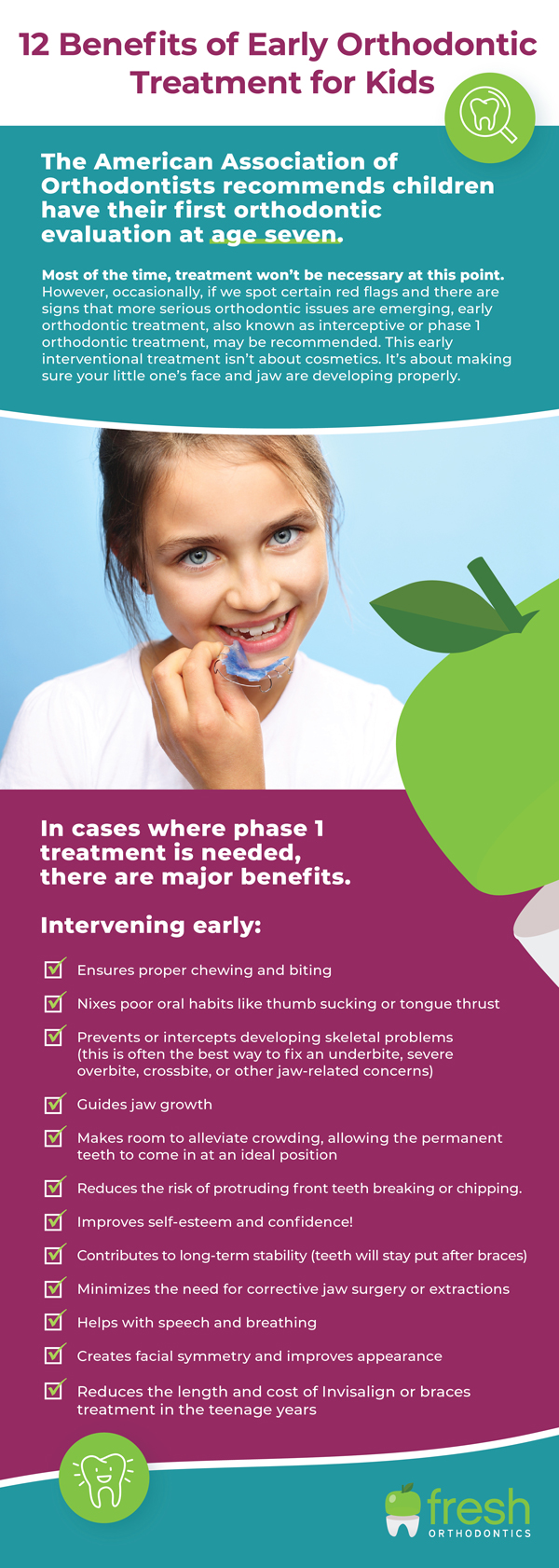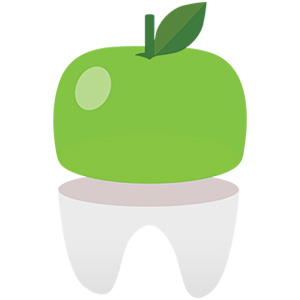
benefits of early orthodontic intervention
There’s a reason the American Association of Orthodontists suggests children have their first orthodontist visit at seven years old. It’s because, by this age, their first permanent molars and incisors are usually in place, and their mouth and jaw have grown enough to give us a sneak peek at how their teeth and bite are shaping up during an early orthodontic treatment consultation session.
In many cases, when our youngest patients visit our Brooklyn orthodontic office, I’ll check them out and send them on their way. They’ll come back periodically so I can monitor them and determine when it’s the ideal time to really get down to business with orthodontic treatment – usually once all of the permanent teeth have erupted in the adolescent or early teen years.
However, in other cases, red flags pop up, jaw development isn’t on track, or there are signs of more serious orthodontic issues. In these instances, early childhood orthodontic treatment, sometimes referred to as interceptive treatment or phase 1 orthodontic treatment, is necessary.
This early interventional treatment isn’t about cosmetics. It’s about making sure your little one’s face and jaws are developing properly. Don’t worry, parents, this doesn’t mean your kid’s teeth will be clad in metal for the next 10 years. In fact, early orthodontics often means less treatment later.
What is Phase 1 Orthodontic Treatment?
Some things, like a severe crossbite, protrusions, or emerging crowding, are much easier to correct if addressed early. And, when it comes to how to fix an underbite or overbite that’s skeletal in nature, the sooner the problem is diagnosed and treated, the better.
Phase 1 orthodontic treatment is when we use appliances or limited braces for kids who still have most, or all, of their baby teeth. Treatment typically starts when the child is between seven and 10 years of age and generally lasts about one year.
Since your child’s mouth is still developing, we can guide jaw growth in the proper direction and influence the position of their permanent teeth, making later treatment easier, more effective, and less invasive by often helping minimize the need for surgery or extractions of permanent teeth.
One-Phase vs. Two-Phase Orthodontic Treatment
With one-phase orthodontic treatment, we wait until all of the child’s permanent teeth have erupted and then they receive a single course of orthodontic treatment, such as metal braces, ceramic braces, or Invisalign ® Teen. Most children fall into the one-phase treatment group, since we always try to let nature do as much as possible before we get started.
In two-phase orthodontic treatment, we conduct the aforementioned phase 1 treatment. After about a year, the active portion of phase 1 orthodontic treatment ends and we enter the retention phase where your child will usually wear a dental retainer. I’ll monitor their growth for several years and wait for their permanent teeth to grow in. Finally, phase 2 treatment occurs, which is the full treatment with braces or Invisalign, and this usually happens in the pre-teen or early teen years.
There is a common, “Oh, my kid will have braces for six years” misconception surrounding two-phase orthodontic treatment. Thankfully, this isn’t true at all. Go ahead, let out that sigh of relief. The total active treatment tends to last three years maximum and is often closer to two years total. People get confused because there are a few years where kids make occasional visits to the orthodontist for observation between phase 1 and phase 2.
An Example of Two-Phase Orthodontic Treatment in Action
Let’s use a case of an underbite as an example. If a child comes in for an evaluation and I see an emerging underbite, I may recommend phase 1 treatment as early as seven or eight years old. First, I identify how to fix an underbite efficiently and effectively based on the patient’s unique needs.
If their upper jaw isn’t growing at the same rate as the lower jaw, I can use an appliance to encourage forward growth of the upper jaw, closing the underbite and correcting a midface deficiency. This is what’s known as dentofacial orthopedics. What is dentofacial orthopedics? It refers to guiding facial growth and development of the jaws. Then, typically in 12 months or less, with the orthopedic correction complete, we’ll remove the appliance and your child will wear a retainer to hold everything in place as the rest of their permanent teeth come in.
After a resting period, around the age of 12 or 13, your child will start Invisalign Teen or braces treatment to shift the teeth into place. If additional adjustments are needed to fix the underbite, auxiliaries like rubber bands may be used in conjunction with braces or aligners to ensure the top and bottom teeth come together in an ideal bite. We’ll wrap things up by creating another custom retainer(s) to help your child maintain their results for life.
The Benefits of Phase 1 Orthodontic Treatment
Sometimes, parents come into our Park Slope orthodontic office feeling guilty about not getting their kids early orthodontic treatment. There’s nothing to feel guilty about. Thanks to our high-tech approach and advances in the field, your teenager or even yourself as an adult can still benefit from orthodontic treatment and achieve a gorgeous smile.
However, in certain instances, there are major advantages to early orthodontic treatment. Here are 12 of the main benefits of interceptive treatment:
- Ensures proper chewing and biting
- Nixes poor oral habits like thumb sucking or tongue thrust
- Prevents or intercepts developing skeletal problems (this is often the best way to fix an underbite, severe overbite, crossbite, or other jaw-related concerns)
- Guides jaw growth
- Makes room to alleviate crowding, which wards off impacted teeth and allows the permanent teeth to come in at an ideal position
- Reduces the risk of protruding front teeth breaking or chipping.
- Improves self-esteem and confidence!
- Contributes to long-term stability (teeth will stay put after braces)
- Minimizes the need for corrective jaw surgery or extractions
- Helps with speech and breathing
- Creates facial symmetry and improves appearance
- Reduces the length and cost of Invisalign or braces treatment in the teenage years
Are you ready to see if your child could benefit from early orthodontic treatment? Schedule a free consultation at Fresh Orthodontics. I can determine if your little one is a candidate and present you with the best possible treatment options.
If your child is in need of phase 1 orthodontic treatment, my team and I will make the experience positive, stress-free and fun. In fact, we were just voted “Best Orthodontist in Brooklyn” in the Dime Best of Brooklyn awards. Come find out why your fellow Brooklynites love the Fresh Orthodontics team!













